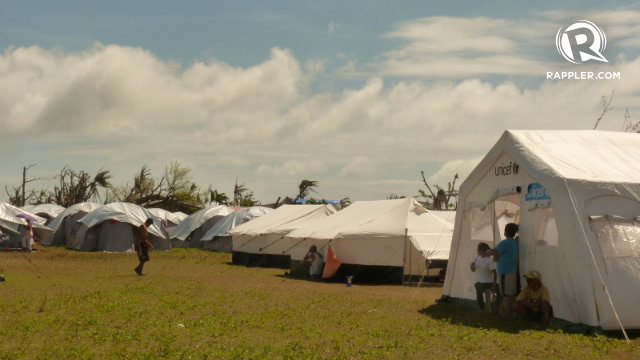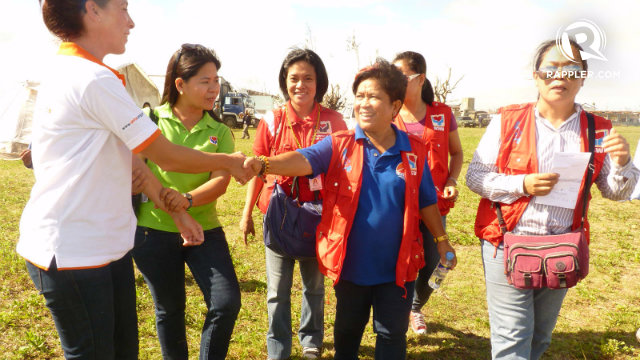SUMMARY
This is AI generated summarization, which may have errors. For context, always refer to the full article.

GUIUAN, Eastern Samar, Philippines – Local government authorities and aid organizations are racing to address the shelter needs of the estimated 1,041 who remain displaced more than one month after Typhoon Yolanda (Haiyan).
Yolanda pummeled through central Philippines on November 8 first making landfall in Guiuan, Eastern Samar. Among the worst hit where the coastal communities of Barangay 6 and Hollywood Jetty where homes -precariously built on stilts in the water – were washed out.
The displaced residents currently live in tents which have been put up on the school grounds of Eastern Samar State University, Guiuan campus—which is a temporary shelter at best. (READ: A month after Haiyan: Rebuilding a resilient society)
“We have already been advised by the school administration that classes will start January 15 and we need to move out of here soon so they can clean the grounds and conduct repairs before school opening,” said Joy Sumook, International Organization for Migration (IOM) camp management supervisor.
But with parts of Barangay 6 and Hollywood Jetty now declared a no-build zone, many residents do not have a place to rebuild their homes.
According to the government Water Code, the no-build zone is the 40 meter buffer zone from the average high tide mark. (READ: Leyte reconstruction: MGB maps no build zones)
Millions displaced
According to the latest reports (as of December 10) by the United Nations Office for the Coordination of Humanitarian Affairs (UN OCHA), more than 1.1 million homes have been destroyed and 4 million people are displaced by Haiyan.
Some 122,233 households have received emergency shelter while 22,396 have received support for shelter construction or repair. (READ: UNHCR, IOM provide emergency shelter for Haiyan survivors)
“We have started building bunkhouses for them as part of temporary relocation site for those who cannot go back to their homes,” said Department of Social Welfare and Development (DSWD) secretary Dinky Soliman who was in Guiuan today for a site visit along with some donor nations.
Guiuan mayor Christopher Gonzales said that a two-hectare plot beside the Guiuan airstrip was purchased by the local government as a permanent relocation site. “But that is not enough. We probably need 2 to 4 additional hectares to accommodate all the residents,” said Gonzales.
Finding land is only part of the problem.
Corrugated galvanized iron (CGI) sheets – a common material used for roofing – and hurricane straps are needed to construct roofs. Only about 28,000 CGI sheets can be produced per week, the rest will have to be sourced externally. Aid agencies comprising the Shelter Cluster of the Haiyan Relief Efforts are appealing to donors to provide 4 million CGI sheets over the next 4 months.
“We are really hoping that the international community can help us with that one. If the materials can not be produced locally [in terms of quantity], what can we do?”
The residents just hope that a solution will come soon.
“Gusto talaga naman sariling bahay na sana,” said Elena, one of the displaced residents of Barangay 6, fighting back tears. “Pagod na kami sa kakalipat.” (What we really want is our own home. We are so tired of transferring homes.) – Rappler.com
Add a comment
How does this make you feel?
There are no comments yet. Add your comment to start the conversation.